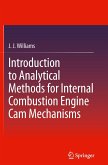
Broschiertes Buch
Your Handbook for Action
4th edition
28. August 2018
Sage Publications

Broschiertes Buch
2013
9. November 2014
Springer / Springer London / Springer, Berlin
978-1-4471-6085-4
| Gebundenes Buch | 81,99 € | |
| eBook, PDF | 73,95 € |
Gebundenes Buch
2013
19. Oktober 2012
Springer / Springer London / Springer, Berlin
978-1-4471-4563-9
eBook, PDF
19. Oktober 2012
Springer London
Ähnlichkeitssuche: Fact®Finder von OMIKRON
